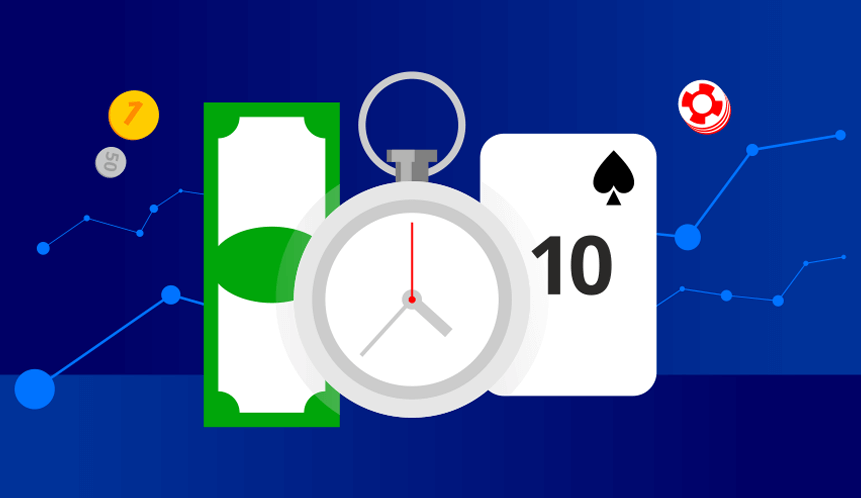
In ancient times, some people believed that Earth rested on three whales swimming in an endless ocean. This analogy is often used to describe a solid basis, a stable and reliable foundation. What is the foundation of successful trading? What whales support it and how many are there? There are three!
They are three types of management, three systems to help you control your risks, money and time. They are called risk management, money management, and time management. That’s what we’re going to talk about.
What you will find in this article:
In lieu of foreword. Why does a trader need these «managements»?
Part 1. Risk management in trading
1.1 Why you can’t get rid of risks but can manage them
1.3 Top 10 anti-risk methods for a trader in the 21st century
Part 2. Money management in trading
2.1 Difference between money and risk management
2.2 Top principles of money management for a trader
Part 3. Time management in trading. 10 key principles
Part 4. Something about synergy and a turtle
In lieu of foreword. Why does a trader need these «managements»?

Management means directing and organizing work and assuming leadership. Among its different types, there is a separate group called personal management. These are techniques that help you manage yourself and not someone else. Personal management comprises principles of self-organization and improvement of self-efficacy in various areas.
One of the key components of trader’s activity is the responsibility for the income (and, by extension, for the life itself), that’s why personal management is a must-have skill for a trader. There’s no «big man» paying salary in trading, is there? No, there’s not. No boss is making the decisions, is that right? That’s right. There no whip master making people work, is there? No, there is not. So, you will have to make your money without «the Man»; you’ll have to asses the risks of your decisions without a boss; you will have to get off the couch and keep going without a whip master.
Simply put, you need to learn how to manage your cash flow, risks and personal time. And this is where money, risk and time management come in.
Money, risk and time management systems are used not only in trading:
- Money management is essential for businessmen, directors of enterprises and investors. But they are not the only ones who need to know how to manage finances. For instance, personal money management systems — for planning and managing personal or family budget — are very popular today too.
- Risk management is used in many professions where there is a place for risk — from aviation to business.
- And it would be good to master time management for anyone who wants to achieve goals and solve problems in a good time and use the valuable asset called time wisely.
All three systems should be used in trading on a regular basis. Trading is a high-risk business, which is carried on in a changeable environment, where sometimes it’s not minutes, but seconds that count. And what’s at stake here is real money and a chance to either multiply your finances or lose thousands or even hundreds of thousands of dollars in a matter of hours.
If you want to successfully trade futures, stocks or currency — you must learn how to manage money, risk and time.
Almost every article about trading psychology shows examples that prove the necessity for these personal management systems. And the terms used in these articles are usually not explained; it is assumed that this is basic knowledge for a trader, just like the ability to tell the stop-loss from the take-profit. But as practice shows, the essence of risk, money and time management is not always clear to beginners, and a good number of pros get it intuitively, without the specifics.
Moreover, many pros begin to use the principles of risk, money and time management after having suffered many bumps and bruises. But you don’t have to follow their paths. You can’t escape bumps and bruises in trading, everyone makes mistakes one way or another, but it’s in your power to scale back their number. You just need to wrap your head around the principles of the three management systems — and it will save you a lot of money, trouble, and stress.
Part 1. Risk management in trading

1.1 Why you can’t get rid of risks but can manage them
There is no trading without risk. You need to remember this fundamental truth and stop looking for magic win-win strategies. Market movements are not regular because they are influenced by many factors that cannot be taken into account even if you do the most thorough fundamental research. These are economic, political and informational factors, including the notorious «black swans» of Nassim Taleb (completely unpredictable events, qualitatively changing the world). Plus, there are also psychological factors based on the behavior of millions of market participants. And the psychology of participants, in turn, is influenced by many other factors — even by the weather outside and moon phases.
Famous trader Larry Williams, who turned $10,000 into a million in a year, compares hopes for a 100% sure prediction of market behavior to looking into a crystal ball. And the consequences of this crystal-gazing are as good as eating broken glass for lunch.
But the fact that risks exist (and you’ll have to accept that they do exist) does not mean that traders should surrender to waves and drift in the ocean of the market. A trader’s boat has paddles, sails and a wheel. Risks can be managed. They can be predicted, balanced and minimized.
And that is actually the essence of risk management.
It is considered that the first trader to clearly define the principles of risk management was the legendary Jesse Livermore. He advised:
- Don’t invest all your money in one trade.
- Do not ignore the protection order — secure yourself against big losses.
- Do not put all your money into work. There may be a promising deal later, and you’ll have no free funds for it.
- «Grow» a profitable trade, don’t rush to close it. This way you can compensate for a few small losses with one good profit.
- Withdraw half of your profits from the exchange to refill your reserve funds (then again, other traders say that it’s up to you what percentage you withdraw, it’s the principle that matters).
Today these Livermore’s principles have become the basics of trading. «And still, he did not escape the ruin!» would notice a well-informed reader. Well, we must admit, some of Livermore’s decisions were dangerous as far as low-risk strategies are concerned. For example, he did not invest more than 10% of his working capital in a trade — but this percentage, too, carries a great risk. Is it possible to increase the efficiency of Livermore’s rules and strengthen the anti-risk component of trading?
1.3 Top 10 anti-risk methods for a trader in the 21st century
Strictly speaking, Jesse Livermore’s rules are a combination of money and risk management principles. Later on, the principles of money and risk management were diversified, expanded and elaborated. Based on the recommendations of well-known traders, we can work out the top 10 principles of risk management:
- Determine the percentage of your deposit that you are willing to risk in one trade. Professionals adhering to low-risk strategies, do not recommend to go beyond the bar of 2%. It is best to risk only 1% of the deposit per trade. And if you have several futures contracts in the same trade — take into account their total value. So, if you choose the risk of 1% per trade, and you place 5 contracts, the risk for each of them should not go beyond 0.2% of the deposit.
- Risk diversification is a useful tool. Similar assets usually behave very similarly during market fluctuations, so do not put one group of instruments at great risk.
- Avoid risky decisions like raising rates, doubling or catching «falling knives». Remember that 10% or even 5% is already a very risky bet. For example, if you open a trade with ten contracts and risk 1-2% per each contract, you leave yourself a little chance to survive and a big chance to lose the entire deposit. Even if in the long term profits may override failures, in the short term the risks of losing increase; and most likely you won’t be able to keep your composure when dealing with a trade with higher risks. Do not forget that the roulette ball is quite capable of landing on black 26 times in a row, so the risk must be minimal — this is your only guarantee of survival.
- Do not «trade the market»; even if it seems that the super-profits are there for the taking. Use your trading system.
- Don’t follow the crowd. Back in the 17th century, the crowd demonstrated striking cohesion, recklessly buying overvalued assets at high prices — it happened during the so-called tulip mania. It is extremely risky to chase after a leaving train when the trend is about to collapse under the onslaught of greedy lemmings.
- Don’t ever forget about stop-losses. It is the law.
- Determine loss limits per day, week and month, and stay within these limits during the downstreaks. If your deposit has significantly subsided, lower the stakes or stop trading for a time.
- Don’t risk money you can’t afford to lose. It is a very bad idea to trade with loaned money. This way you risk not only the deposit but also your welfare in general.
- Treat trading as a business, not as a casino. Keep your excitement and other emotions under control.
- Study tools that help mitigate dangerous trading aspects — for example, risk hedging, trailing stop-losses, etc.
To sum it up, do not let risks control your emotions and evoke fear and greed in you. It’s in your power to trade calmly!
Part 2. Money management in trading

2.1 Difference between money and risk management
The concept of money management is used in trading less often than risk management. Oftentimes these terms are equated. But management of finances is a broader concept, which involves strategic investment planning.
Some principles of risk and money management in trading coincide. We can say that risk management is a part of money management.
Let’s not repeat ourselves and focus next on money management issues that haven’t been addressed in the previous part.
2.2 Top principles of money management for a trader
Money management is based on a holistic perception of one’s financial means — it requires taking into account losses and profits, income and expenses, retrospective analysis and prospects. In other words, it is a clear understanding of what monetary resources you have, from which sources your finances are formed, how you can distribute them, how much you can make and which tools you can use to do it. Money management also involves setting financial goals.
So, here are 12 key principles of money management, which should be taken on board by a trader:
- Think strategically. Strive to increase your deposit — the working capital you can use in trades. To do this, determine the percentage you find appropriate (30-50%, for example) to add to your deposit regularly. This way you can start small and then gradually begin handling big money.
- Choose a trading system with a good profit-loss ratio and a risk level suitable for you. You must have а clear idea of the possibilities of high-risk, medium-risk and low-risk strategies — to avoid being deceived by your own expectations.
- Determine the deposit that will allow you to trade comfortably. The more reserve funds you have, the more comfortable trading will be.
- Risk diversification generally refers to risk management methods, whereas liquidity analysis is a strategic part of financial management. Remember that throwing money around different assets isn’t a good idea either. Find a balance between diversification and consolidation of funds. When choosing assets, lean toward the liquid ones. You want to invest in a low-liquid asset that promises a good profit in the long term? Do it with caution and not at the expense of your fixed capital.
- Be flexible. You don’t have to be purely a «bear» or a «bull». Keep track of the market. One of the advantages of trading is the opportunity to make money both on advances and declines.
- Treat losses as operating costs — and do not be afraid of them. Don’t let yourself fall into despair and depression because of losses. If the profit makes up for them — everything goes fine.
- Don’t forget that you came to the market to make money. Therefore, you need to «grow» profitable trades (mind the Livermore’s tips!). It would seem that a small profit is also a profit, but not in trading! Small profits, unable to make up for losses, gradually lead to ruin.
- Record your profit. Distinguish between the exchange deposit and the funds you have withdrawn. Don’t fall into the mental trap of «paper» (virtual) profit: it is not yet your money, though you may wish (not always reasonably) to put it into work.
- Your funds should not be limited to your deposit on the exchange. After having accumulated a deposit, beginners often start trading right away — even though they don’t have enough money for a pack of pizza rolls, not to mention a financial cushion. In such situations, traders tend to be more nervous, more scared of losses and greedy; as a result, they make a lot of mistakes. Do not go to the exchange feeling that this is all your money.
- When being engaged in trading and thinking in terms of the global market, do not forget about personal money management. It is your rear unit that allows for peaceful trading in comfortable psychological conditions.
- Develop your awareness of the value of money. Fight against stereotypes («money is evil», etc.) that prevent you from making it. Form global financial thinking and learn to handle large figures.
- Develop financial goals; don’t be afraid to look a year, five or ten years ahead. Setting goals involves motivation and helps you make money. Treat trading as a part of your life strategy and as a tool for fulfilling global plans.
If risk management is an element of money management, money management is a part of life management.
Part 3. Time management in trading. 10 key principles

It’s hard to find someone who, being interested in methodologies of goal-setting, motivation and striving for success, is not at least partially familiar with time management. Personal time management skills are important for businessmen, ladder climbers, managers, and regular employees working for «the Man». Studying time management is a 21st century trend. Huge amounts of information, the pace of modern life, competition, the desire to succeed in life and to find time for hobbies, rest and traveling at the same time — all this makes millions of people want to find out how to organize their working days better.
It is hardly necessary to describe various methods of time management in detail right now — you can read about them yourself; luckily, there are enough books on this topic. Let’s focus our attention on the principles that must be considered by traders:
- Choose the trading style (scalping, intraday, long-term) that best suits your temperament in terms of the speed of decision-making. Everyone has their own pace of work. Some people are bouncy, others are laid-back; some are afraid of information explosion and others avoid boredom. The efficiency of decision-making and the minimization of mistakes largely depend on how comfortable you are working at the speeds that one or another trading style requires.
- Amateurs trade from time to time. Professionals trade systematically and they also choose the most favorable entry time — when the market is active and trades are most promising. But since trading is a job, and one does not always want to work, there are moments when one is overcome with laziness and procrastination. Professionals pull themselves together and act according to plan because they know that trading requires commitment and strict adherence to the trading system.
- You don’t need to trade day and night, covering all trading sessions around the world and being glued to the charts. It won’t do you any good. You will simply burn out like a candle — end of story.
- You need to tell procrastination from chronic fatigue (burnout). You need to fight the former (by planning, using different time management and motivation methods) and treat the latter. Better yet, do not bring yourself to this state.
- Choose the time for trading and organize your work during this period in such a way as to avoid being distracted. Concentration and focus are very important for a trader.
- If you have other important activities besides trading (another business, work, study), map out your time so that they are not in conflict with each other (as well as it can be done). Careful planning of your working day and week will be helpful in this matter.
- Try to think which activities can be postponed for the time being or delegated to others, and which can be given up altogether. This is especially important if you combine trading with another job, and you are catastrophically short of time.
- Be sure to make time for learning. Learning should be your priority while you are still a beginner. But it is also important for the pros to continue their self-education. Explore trading instruments, read books, try new trading strategies. Since learning is an effort-consuming matter, your brain might procrastinate and postpone this task for later — slack off, simply put. So mark down in your weekly plan the hours you intend to dedicate to learning and follow the plan.
- Your rest should also be included in the plans. Be sure to make time for walks and exercise. To «unload your brain», it is good to switch to a completely different activity: after working at the computer, swing a shovel for a bit (well, figuratively speaking). And it would be better to give up time eaters like social networks entirely, or at least keep their presence in your life to a minimum.
- Strive to ensure that your hourly rate is constantly increasing. You must admit that it is better to make $1000 per hour than 10 hours! Of course, you can «rake it in» twice as much as usual by adding a second shift to your schedule. This is the way of «hard workers». But it is much more gainful to learn how to make the same or even bigger money, not increasing but reducing your working hours. This is the path of valuable workers, experts, successful businessmen, investors, and traders.
Time is the most valuable asset in our lives. Arrange your work in a way that allows you to enjoy your time and the money you make!
Part 4. Something about synergy and a turtle

Each of the described management systems is self-sufficient. If you use any of the three types of management (risk management — obligatorily, and money and time management — ideally), you will significantly increase your personal efficiency and income and gain more success in trading and life. But if you use all three systems together, the efficiency will increase several times.
The thing is, this «triple strike» pushes the button to launch the synergy. Thanks to this phenomenon, the interaction of several factors leads to a spike in efficiency. The effectiveness of a system significantly exceeds the sum of the effects of each of its elements. Sometimes there is not even a quantitative, but a qualitative breakthrough.
For example, a merger of two companies may result in returns higher than the sum of their returns before the merger. Moreover, the company will be able to introduce a new product and enter a new market — there will be a qualitative leap.
Take advantage of risk, money and time management to the full: apply the principles of all three whales that support successful trading!
Speaking of whales. According to another legend, Earth is actually resting on elephants. And the elephants stand on a giant turtle floating in the World Ocean. Why did that myth come to my mind? Because there is a very interesting analogy: the turtle supports the elephants carrying the solid earth, and similarly, the three types of personal management have their basis called self-discipline.
The art of self-management, including money, risk and time management, is mastered in three stages:
- learning;
- implementation;
- regular application.
At each stage, self-discipline requirements become more strict: more mental resources are needed to achieve results. Not everyone will be able to finish this article, wouldn’t you agree? But you’ve read down this far (hopefully, all the way through, without jumping over the paragraphs). That means you’ve already done more than 90% of losers who either passed by this topic or got scared by the scope of the article or were unable to understand it altogether.
But this is only the learning stage. Now you need to switch on your motivation, warm it up and kick it into high gear to begin introducing the principles of risk, money and time management into your trading practice. The main thing is not to put it on the back burner. This stage will eliminate many of those who read and had the desire… but put the task off indefinitely.
And then you’ll need to adhere to the principles listed above, controlling yourself and not giving yourself any free passes. Yeah, it’s gonna be hard not to break. Only the strong will endure. The first three weeks are the most challenging — psychologists claim that it takes 21 days for a habit to form. Then the brain itself continues to operate in the chosen mode.
Self-discipline, control, and responsibility for your own life are the basis of success in trading. This is the basis for cultivating good habits that shape your working style and help you reach the top.
